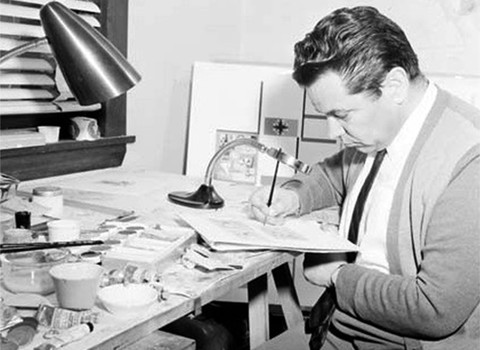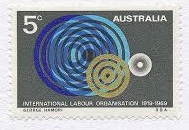Coogee Media
HISTORY | STORIES | BEYOND BLOG & CREATE FACTS |
Georg Hamori - Coogee Postage Stamp Designer
From Hungary to Israel
Georg "George" Hamori was born in Budapest Hungary on 23 November 1919. He survived the holocaust and by the late 1940s, finding the new Communist regime in Hungary becoming
too burdensome, he traveled about Europe studying design in Austria, Germany, Italy, France and England. He settled in Israel in 1948 or 1949 and established
himself as a freelance well-regarded art designer. He happened to meet the head of the stamp printing branch of the Israeli Post Office and from there ended up
designing more than 50 postage stamps for Israel. He also won a competition to design a stamp for the United Nations and became a regular designer of UN
postage stamps.
To Australia
At some stage, he met and married his Hungarian-born wife Eva, and at the end of 1955 while they were living in Tel Aviv, and had a daughter Annette.
The Hamori family migrated to Australia, arriving in Sydney; he arrived in October 1956 and the rest of the family followed about a year later.
192 Oberon Street Coogee
They set up residence in Coogee in an apartment at 192 Oberon Street. This was a two storey art-deco style of building that has recently been
almost completely demolished to make way for a much larger apartment building. Thankfully, some of the character of the old building still remains because
the developer has retained the front, art deco facade and incorporated it into the new building.

192 Oberon Street, Coogee, c1990
George continued his career as a designer where he worked on many designs for Australian postage stamps. They later moved to Bellevue Hill where his studio was attached to his home.

Hamori's Commonwealth Bank Logo Design of 1961
Successful Career
Among his projects was the design of the Commonwealth Bank logo in 1961. He also undertook work for Qantas Airlines, the Reserve Bank of Australia, Esso Oil and
some large manufacturers. In 1963 he was one of the artists selected to submit a design for Australia's new decimal currency, although the design commission was
eventually awarded to Gordon Andrews. Hamori won prizes for the graphic design of his annual reports for Qantas, and worked for them for many years, designing over
30 of their annual reports. Examples of Hamori's work are included in public collections, including the National Library of Australia. Copies of his travel posters
fetch a substantial price when offered for sale or auction.

Georg Hamori at Work
He won a competition offered by the Australian Post Office who called for designs for the Commonwealth Games to be held in Perth in 1962. George's design was chosen for the 2/3 value. The following year, he designed a stamp commemorating the Centenary of the Red Cross and this was also used for the Papua & New Guinea stamp issued at the same time. His designs since then have included the 1965 Centenary of International Telecommunication Union, the 50th, Anniversary of the death of Sir Lawrence Hargrave in the same year, the 1968 and 1969 Christmas stamps, the 1969 International Labor Organisation stamp and the 1970 stamps issued to mark the 50th anniversary of the founding of Qantas Airways. He designed many of the stamps of Papua New Guinea including a superb set of stamps in 1969. He also designed stamps for Fiji, Ghana and the Bahamas.
Big Impact
The late graphic artist George Hamori was described by contemporaries as a shy and retiring man, but he had a big impact on the look of
Australia postage stamps. In his later years, he travelled to Hungary annually to visit his parents' graves. He was there for the launch of Hungary's 1989
Christmas stamp, which he had designed. He received a lapel pin from the Hungarian government in recognition of his work.
Georg Hamori died in 1990 on a visit to Tel Aviv, Israel. He was survived by his wife Eva and daughter Annette. Eva Hamori died in October 2002. The Hamori family continue to live in Australia.


References
Copyright © Coogee Media All rights reserved
| CONTACT US | ABOUT US |